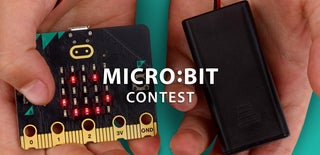Introduction: Jedi Academy With Micro:bit!
The Jedi Academy were a series of projects that we created to work with the students' feelings and practise their use of English as a Foreign Language. It includes Math, Language, Science and Arts activities.
We created the Jedi Academy to deal with some problems that the students were facing at home, so we created Jedi Code posters where we stated that those people that left us where still in the Force (which was thinking that the knowledge and experiences that we lived with them will always stay within us), also that there is no ignorance, there is knowledge... And the best part of the project was inside the Science subject where we designed a Lightsaber in Tinkercad and build it using Cura and a 3D printer
Supplies
As seen in the pictures:
- Micro:bit V2
- Addressable led lights (WS2812E)
- Transparent PVC tube
- 3d printer and filament
Step 1: Watch the Trailer and Create Your Jedi Code Poster
Before starting the Jedi Academy, we will watch this trailer with the Jedi Code and decide the aspects that we will use to create our own code, the colours of our Force and, if we've got time we will colour some pixel art related to Star Wars with operations: multiplications, divisions, etc. Here is a link with some worksheets to colour and also the trailer.
Step 2: Design the Lightsaber in Tinkercad
In this step, we will design the physical lightsaber that will contain the micro:bit when being used.
Using different forms
Here is an example of the lightsaber we created using Tinkercad and then exported it using Ultimaker Cura to print it.
Attachments
Step 3: Create the Code for the Addessable LED Lights in Makecode
Using the library named as Neopixel, we can code the lightsaber so that it will bright more when it is shaken, or when someone has hit it, using the V2 of the micro:bit and its touch sensor. We created a function called "The Force" for when it was shaken, so that it would be called when shaken.
- The first part to create the coding part is to decide whether it will be activated with an input (Pressing button A...), when starting the micro:bit or as a never ending program.
- Then, we need to set the LED strip in the pin we will be using and also the number of LED lights we have.
- After that, we need to use condition blocks to decide when the different animations will be happening, for example:
- If the logo is pressed, show a rainbow.
- If the A button is pressed, turn the LEDs blue.
- If the lightsaber is shaken, make the LEDs rotate by 1 and repeat it several times so that it will create an animation.
Remember you can add as many conditions as inputs you have, so that will define your force. Here attached you will find an example of the HEX code.
Your imagination is the limit!
Attachments
Step 4: Build the Lightsaber
Once the code has been created now it's the time to build it using the PVC tube and the printed part, paint it and use it.
May the force be with you!

Judges Prize in the
Micro:bit Contest















